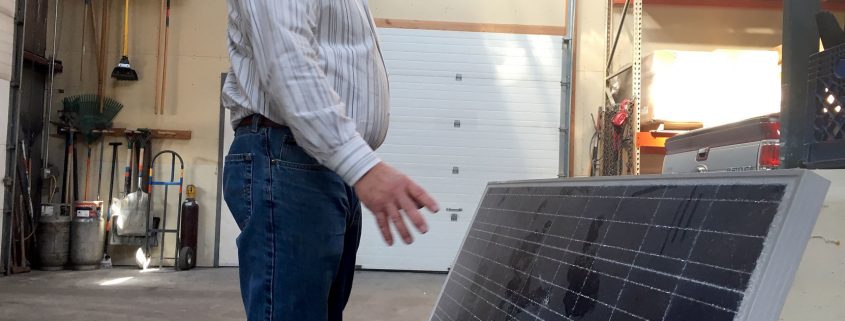A Case Study In Solar Energy Rebates
Click here to view original web page at www.newspressnow.com
Alternative energy made a grand entrance five years ago as Northwest Missouri was booming with solar panel installations. City records in St. Joseph, for example, showed 51 permits issued between four contractors for both commercial and residential projects in 2012. And the permits kept coming in for at least two years following.
JR Cheek jumped on the opportunity to cut down his $650 a month electric bill at his business, JR’s T.B.A. and Service, 405 S. 36th St.
“In the peak of summer, when there’s the most rays, it’s saving me over $450 a month,” Cheek said. “I’ve had a low bill of $57 and that’s the business talking.”
During the winter, when the sun is limited and he uses more electricity, his bill was $309, which is still less than half of what it was.
If a customer is using the acquired panel electricity, it’s free, but the electricity garnered from the panels can roll over with Kansas City Power & Light and create a credit. At Cheek’s home, his family doesn’t use as much electricity as those panels generate. Therefore, his residential bill usually has a credit.
“But when you use (their electricity), you have to pay (the bill),” Cheek said.
At home, Cheek’s average bill was anywhere from $175 to $200 before installing solar panels. The family generated a lot of credits before putting up a swimming pool. That uses more electricity so there’s not as much rollover, Cheek said. But they still don’t use all the credits.
“When we went into winter we had $283 in credits earned so that took out October, November, took out some December but I expect a bill soon,” he said. “Last year he had only two bills. One for $25 and one for $50. So a total of $75 out-of-pocket.”
Just three and a half years after installing solar panels at his home and business, Cheek said he has recouped all of his out-of-pocket money for the system. And that doesn’t include the tax credits he earned for the installation.
Government subsidies are a large part of the appeal. While there are still federal tax credits available, the rebates through Kansas City Power & Light are spoken for.
In 2011, the utility’s rebate was set at $2 per watt with a maximum rebate of $50,000. That rate was good through 2014. The rebate has since gone down to 50 cents per watt for those receiving it now.
“We have committed all of our rebates,” said Drew Robinson, sustainability products manager with KCP&L. We’ve come to the end of about $86.5 million in rebates given out and there are no plans to extend anymore.”
Missouri law established the amount per watt used to calculate rebate payments every year until 2020, when the rebate program will end.
Today, the only federal tax credits for energy efficiency improvements that remain in effect are for solar energy systems (solar water heaters and solar panels). These federal tax credits remain in effect through December 2021.
“I see it more as a potential partnership moving forward,” he said. “We are very aware of societal opinions to move away from fossil fuels. We have efficient coal plants but we’re starting to look at other renewable resources.”
While in their infancy, Robinson said there are two alternatives on the horizon.
There is a proposed community solar program where the utility would build large-scale installations of solar panels and customers could subscribe to that. Another project is a green subscription geared toward larger customers to aggregate their interests to wind farms.
When he first started back in 2011, panels cost about 80 to 85 cents per watt. Now it’s just over 50 cents. With the tariffs in place, Collins figures it will increase his spending by about 10 to 15 percent, which is still less than what it cost him when he first started.




Leave a Reply
Want to join the discussion?Feel free to contribute!